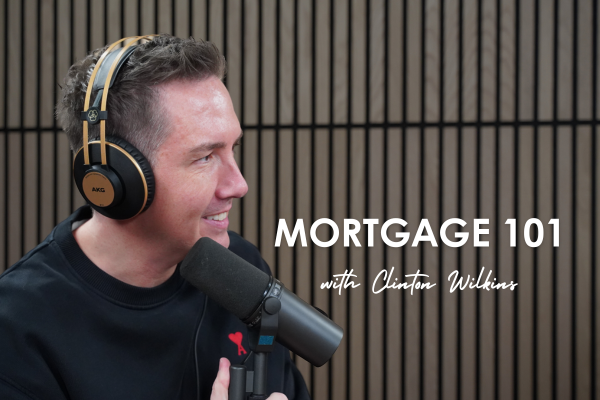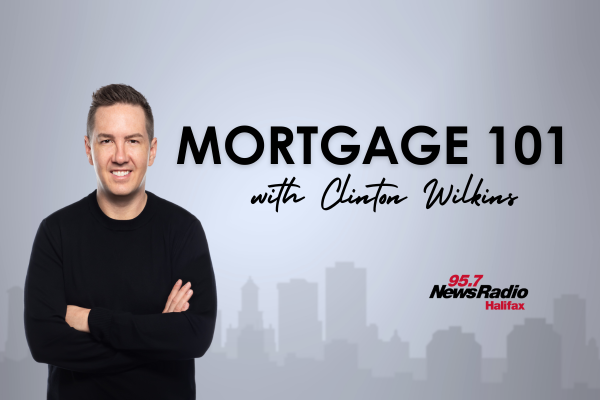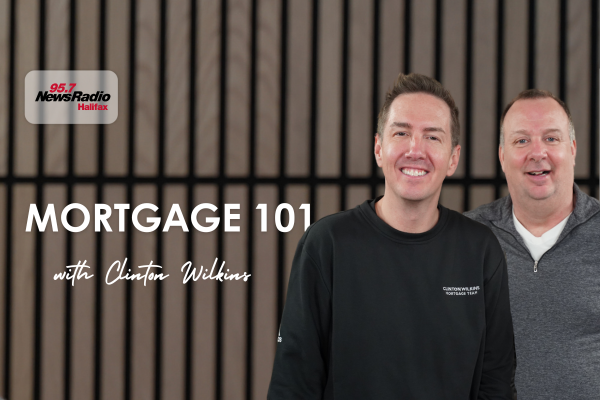Sandi Burns, Chief Credit Officer at Manulife Bank, joins Clinton and Todd to discuss her role in setting mortgage guidelines and managing the lending portfolio while highlighting Manulife's unique mortgage product.
Mortgage 101 – new construction in Halifax right now | April 2022 Part 4
In this episode of Mortgage 101 with Clinton Wilkins and Todd Veinotte, as heard on CityNews 95.7 and CityNews 101.1, the guys talk about what’s happening with new construction in Halifax right now. You can watch read or listen as Clinton and Todd talk about how new construction works, the difference between turnkey and draw financing, and all the little details to help you decide if new construction is right for you!
Mortgage 101 with Clinton Wilkins & Todd Veinotte: New construction in Halifax right now
Don’t feel like watching the video? Check out the transcript below.
Transcript:
Let’s talk new construction in Halifax
Todd Veinotte: [00:00:00:02] Let’s talk new construction. What do you think?
Clinton Wilkins: [00:00:01:27] Ooo, lots going on in the new construction zone right now. I can tell you that HRM has fast tracked a bunch of new construction lots, which is great news for people who live here in Halifax and really probably across this province.
They fast tracked several lots, which is really very good for developers. But that’s going to translate into homes for people to buy. And some of the lots that they fast tracked are some multi-unit type lots that could be apartments down the road, which is very exciting. And we need all levels of housing here.
You know, it’s not just new construction, single family homes. We need townhomes, we need condos, we need apartments, we need low income housing, we need seniors housing. We need all kinds of different housing, obviously, in this market. And I think the city has heard the requests coming from the province. And I know the federal government is trying to motivate all levels of government to get these shovels in the ground. And I think it’s great news.
And I think when there’s new construction, people will move up, maybe they’ll list their resale homes for sale, and maybe that will open up some more opportunities for first-time home buyers.
How does new construction work?
Todd Veinotte: [00:01:23:09] All right. So tell us about the mechanics of a mortgage for new construction. Do you get a draw? How does this all work?
Clinton Wilkins: [00:01:32:24] Yeah. So there’s two different ways that you can finance a new construction. The most popular way and I’m going to go out on a limb and say 90 per cent of the new constructions are done with a turnkey. So that type of transaction and what a turnkey means is you as a buyer, you pay at the end.
The risk is on the developer, which is the builder, and you don’t pay until the builder gives you a home, that you have an occupancy permit, the home is all completed and you know, it’s very safe. The reason that’s the preferred method: it’s safe for you, it’s safe for them and it’s safe for the bank.
Todd Veinotte: [00:02:17:12] It wouldn’t be safe for the developer?
Clinton Wilkins: [00:02:20:14] Well, it’s pretty safe for the developer because guess what? They don’t have to worry about getting paid.
Todd Veinotte: [00:02:24:14] No, but they got to have the money to get to that.
Clinton Wilkins: [00:02:26:23] This is true. But you know, that cost is built into this construction, or into the purchase agreement, we’ll say.
Todd Veinotte: [00:02:33:14] Yeah.
Deed transfer tax is more expensive
Clinton Wilkins: [00:02:34:11] And you know, there’s pros and cons on doing a turnkey. You’re going to pay more deed transfer tax with a turnkey because you’re paying the transfer tax in the full amount of the purchase. So that’s one downside.
Todd Veinotte: [00:02:45:19] Well, you do anyway, don’t you?
Clinton Wilkins: [00:02:48:07] If you if you do a draw mortgage you already own the land.
Todd Veinotte: [00:02:52:05] Oh, I see.
Clinton Wilkins: [00:02:52:26] So you’ve only paid deed transfer tax on that lot. You know the other kind of upside is,
Todd Veinotte: [00:03:01:10] Not a huge amount of money there though?
Clinton Wilkins: [00:03:02:29] Like we’re talking a couple thousand dollars, you know, maybe $5,000, $6,000, $10,000. In the grand scheme of things, in my personal opinion, I believe a turnkey is the best for everybody involved.
Todd Veinotte: [00:03:17:02] Is that right?
Clinton Wilkins: [00:03:18:00] Now, I’m not saying that things cannot go wrong with turnkeys. I know, Todd, there was a news article here in Halifax that a developer basically has delayed with the intention, we will say maybe untested intention to wait these buyers out with the hope that they’re going to cancel their purchase agreement because they can resell these homes for $200,000 and $300,000 more than what they entered in this agreement prior to 2020. So I’m not saying that a turnkey is without fail. It is typically the safer route.
Draw financing vs turnkey
Todd Veinotte: [00:03:52:06] So the other option would be you take a draw and you’re kind of the subcontractor yourself?
Clinton Wilkins: [00:03:57:18] Yeah, well, you could still hire a general contractor. You still could.
Todd Veinotte: [00:04:03:03] But you handle the draws?
Clinton Wilkins: [00:04:04:08] You handle the draws. And typically when you do draw financing and we don’t currently offer this in our office, but certainly lots of lenders do, Todd. And when you do draw financing, you can either do a self build or you can do a contractor build.
If you do a contractor build, the contractor would have to have at least Atlantic New Home Warranty or they would need to offer a one off policy for Lux. If you do a self build, you need a quote for every single dollar to build a house to 100 per cent. Self builds, as you can imagine, are very, very risky.
You know, you get hurt, there’s cost overruns, you can’t get the subcontractors in place, there’s material shortage. I think draw financing is very, very risky. If I am honest, I don’t think customers are typically happy when we do draw financing. And, you know, as a business, we basically decided we don’t want to put clients in that risk position.
Are we maybe cutting off our nose a little bit and maybe giving up on some business that we certainly did a lot of draw financing in the past, Todd? I think a little bit, yes. But guess what? That accounted for less than 5 per cent of our business. And it’s very, very time consuming.
We think turnkey is safer
Clinton Wilkins: [00:05:18:23] And usually clients aren’t that happy because it’s a lot of work and, you know, things go wrong, and we deal with obviously a couple of different partners and many of the bank lenders have actually exited doing draw mortgages. It’s just too risky.
And typically the cost for interest rate on a draw mortgage is higher than what it would be on a on a turnkey. So pros and cons to both. My professional opinion: I think a turnkey is safer. If you want to do a draw, we’re not the place for you. And I’ll just be very open and honest. I’m not saying that we’re never going to do a draw again. I’m not going to say that, Todd. It’s just not our bread and butter. And we want to be experts at what we do every day, and we want to give good advice.
And I think that’s really how we’ve built this business and that’s why we’ve done over 4,000 transactions. You know, we haven’t done this based on like a hope in a dream. We’ve done this based on, “hey, we have been tried and tested and we can give expert advice for the types of transactions that we’re doing every day.”
Todd Veinotte: [00:06:23:17] So I would think on the turnkey, the developer would have to get some documentation from the lender that the money’s there.
Clinton Wilkins: [00:06:30:28] Yeah, we certainly have to give you a letter of financing. That’s certainly part of the agreement. And as a buyer, you’re going to give the developer, the seller, the builder, a deposit. And that’s part of the purchase agreement. That deposit will be used towards your closing cost, and maybe that deposit is going to make up part of your down payment. And you don’t pay, and the mortgage doesn’t close until the house is complete.
What’s new construction like in Halifax right now?
Todd Veinotte: [00:07:00:20] So just quickly, is there a lot of building going on? Are there a lot of opportunities?
Clinton Wilkins: [00:07:05:02] Yeah, there certainly a lot of construction. I can say that, you know, I think there’s more resale homes kind of changing hands than there are maybe our new construction. But there certainly a lot of new construction happening all the time.
And Todd, with all these lots that have now been opened up and fast tracked, we’re going to see more and more new construction. I’m excited. I think it’s great business. And usually buyers who buy a new construction home, usually they make money.
Todd Veinotte: [00:07:33:06] How do people get a hold of you?
Clinton Wilkins: [00:07:34:10] Check us out online. I think that’s the first place to start. You can check us out at teamclinton.ca/radio. Lots of great information on our website. We have hundreds of blog posts, current rates. You can download our Guide to Homeownership and even watch some of our videos from months come by.
Todd Veinotte: [00:07:51:00] Yeah, you got it. Always a pleasure, Clinton. Thank you so much.
Clinton Wilkins: [00:07:53:15] Thanks for having me.
Todd Veinotte: [00:07:54:12] That’s Clinton Wilkins and myself, Todd Veinotte. Mortgage 101: Your guide to Homeownership. Thanks for listening, everybody.
If you have any questions, get in touch with us at Clinton Wilkins Mortgage Team! You can call us at (902) 482-2770 or contact us here.


